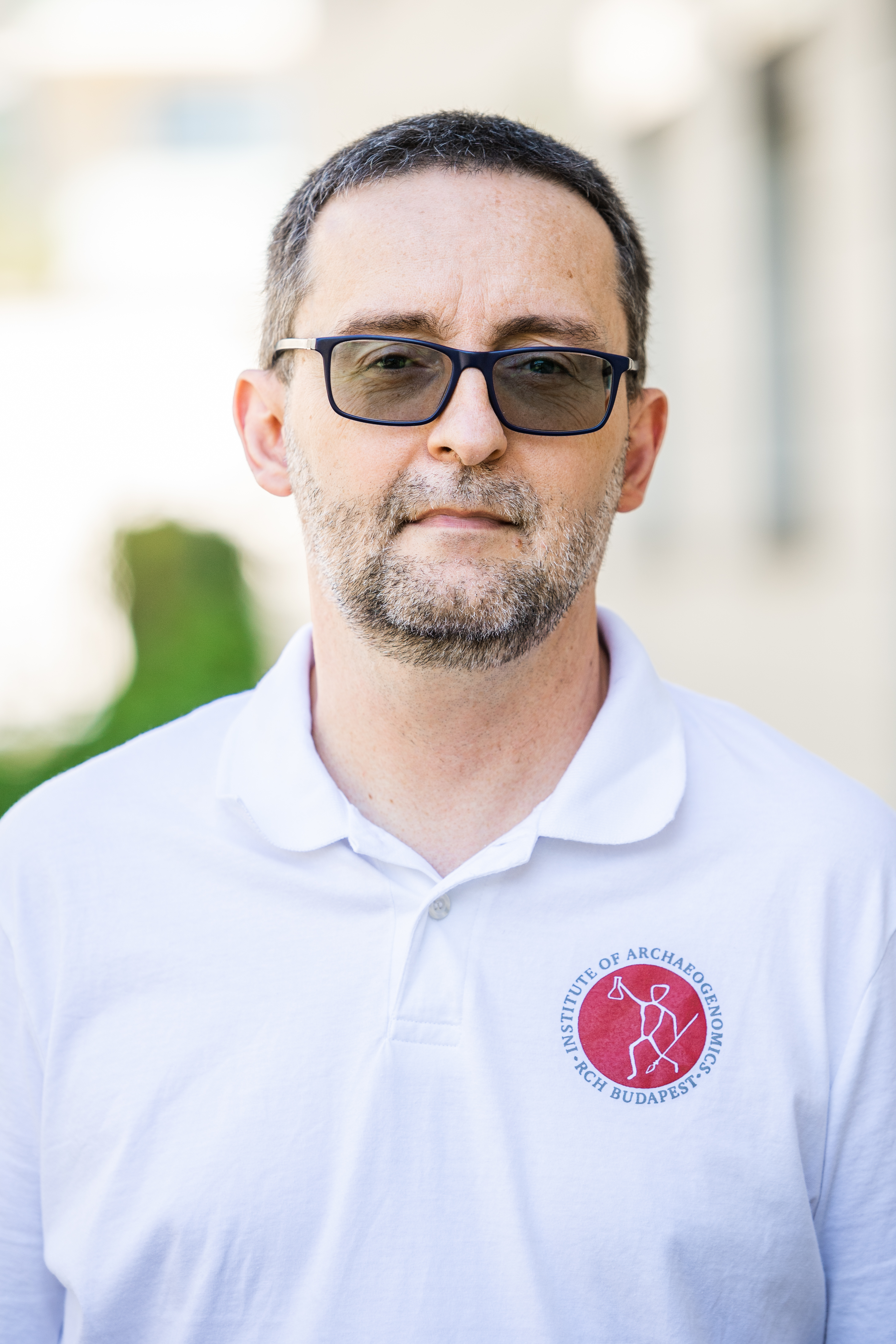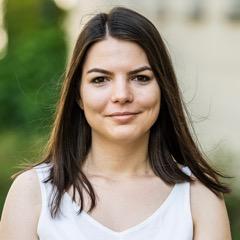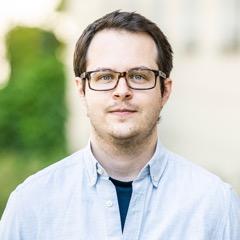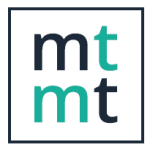Anna Szécsényi-Nagy
Lead researcher
Archaeogeneticist, archaelogist, PhD
I am an archaeologist and geneticist, inspired by the nascent field of archaeogenetics during my teenage years. A significant portion of my own research is connected to the population genetics studies of the prehistoric populations of the Carpathian Basin. Since 2014, I have been working as an archaeogeneticist at the Research Centre for the Humanities and received my doctorate in Mainz in 2015. From 2021, I have been leading the Institute of Archaeogenomics, which emerged from the Laboratory of Archaeogenetics of the Institute of Archaeology. As an institute and project leader, I consider the work born out of interdisciplinary dialogue to be the essence of bioarchaeological projects. In the current project, I am working as a lead researcher, aiming to create and maintain collaboration among scientific fields, and to assist in the planning and execution of bioarchaeological work, from sampling to disseminating the results.
Veronika Csáky
Archaeogeneticist, molecular biologist, PhD
I graduated in 2010 as a molecular biologist, and subsequently – during my doctoral studies – I began to focus on archaeogenetics, where I mastered the methods of this research field and the whole workflow: from bone extraction to the analysis of the DNA sequences and to the statistical processing of the obtained results. Since 2016, I have been working as a research fellow at the Institute of Archaeogenomics, where I currently focus on results' processing, evaluating, performing population genetic and statistical analysis, and their interpretation. These will also be my main research tasks within the Momentum Program, with a focus on the genetic composition, relationship and connections of the investigated population.
Bea Szeifert
Archaeogeneticist, geneticist, PhD
Since 2017, I have been involved in archaeogenetics. As a PhD student, I have become familiar with and mastered the entire laboratory workflow from sampling to DNA sequencing. Furthermore, I also got experience in data analysis. My primary research field is human population genetics and the investigation of relationship networks within and between human communities. I will mainly focus on these topics in the Momentum program. In addition to my research duties, I also participate in organizational tasks related to e.g. sample processing.
Balázs Gusztáv Mende
Paleoanthropoligist, PhD
After earning my history degree, I obtained a PhD in paleoanthropology from the University of Szeged. I have been a member of the Archaeological Institute for nearly thirty years, and in recent years, I have been working at the Institute of Archaeogenomics. My professional work mostly focuses on the paleoanthropology and paleodemography of the populations of the Carpathian Basin. I participated as an organizer in the large-scale development projects of the Archaeological Institute. In the last 10-15 years, I have primarily been involved in the planning, organizing, and execution of projects, most recently in the Árpád Dynasty program and the research program of early Benedictine monasteries. I have been a regular participant in the historical expeditions of Pázmány Péter Catholic University. In the Momentum group, I contribute to the creation of sampling strategies, the execution of sampling, and the organization and implementation of supplementary scientific investigations.

Dániel Gerber
Computational biologist, Molecular biologist, PhD
Since 2015, I have been involved in bioinformatics, and since 2016, I have been working with archaeogenetics. Between 2017 and 2023, I wrote my doctoral dissertation pioneering the integration of these two research fields for the first time in Hungary. My primary research area focuses on adapting, developing, and applying computational methods to archaeogenetic datasets, encompassing not only population genetics but also sequence analyses such as raw data evaluation, metagenomics, and the discovery of clinically relevant variants. In connection with the Momentum ("Lendület") program, I mainly focus on the genetic study of pathogens (uncovering/analyzing the genomes of archaic pathogens) and domestic animals (horses, camels), along with adapting and developing the necessary computational/statistical methods for these studies.

Krisztián Kiss
Historical anthropologist
My research interest as an anthropologist is the biological reconstruction of past human populations from the Carpathian Basin of the 1st-16th centuries AD. This process involves classical anthropological analyses (biological age, sex, height), paleopathological investigations on the level of an individual or populations, furthermore craniometric analyses to reveal patterns of interactions between the former populations. To use my knowledge acquired during my bachelors (radiographer) I also integrate paleoradiological methods to my working process if neccessery. As a member of the MTA-BTK Lendület Momentum Bioarchaeolgy Research Group my main goal is to reconstruct the way of life by analysing osteological collections representing the North Eastern part of Provincia Pannonia from the 2nd-5th centuries AD. For this I examine oral pathologies, activity-dependent degenerative joint abnormalities and traumatic changes. Besides working on this project I am a teacher assistant at Faculty of Health Sciences, University of Miskolc.
Melinda Megyes
Microbiologist, laboratory assistant
I have been working as a laboratory assistant at the Institute of Archaeogenomics for two years. As a project member, I will be responsible for the laboratory processing of samples submitted to genetic testing. With my previous experience in microbiological research projects, I will also assist the research group in pathogen screening.

Kristóf Jakab
Computational biologist
As a staff member of the Institute of Archaeogenomics, my primary task is the processing of raw sequencing data and managing the related computing infrastructure. In the Momentum Program, I will also assist the bioinformatics part of the research, and I will participate in the adaptation of existing and new computing procedures to cloud-based systems.

Katalin Ottományi
Archaeologist, PhD
I graduated as an archaeologist specialised in Roman and Migration Period. I worked as an archaeologist for 40 years, 25 of those were spent in Szentendre at the Ferenczy Museum. My main area of research is Pest County. One of my topics is Late Roman, 4th to 5th century pottery, mostly from the fortifications of the Danube bend. During my museum work I excavated several civilian settlements, vici, villae and the adjoining cemeteries thanks to large-scale excavations. By the time I retired I was able to publish all of my excavations from the Late La Téne Period to the Hunnic Period. This project aims to shed light on the interactions between the autochthonous Celtic and the Roman population based on the graves found in the cemetery of a civilian settlement (Páty) in the hinterlands of Aquincum.
Orsolya Láng
Archaeologist, PhD
I have been an archaeologist at the Aquincum Museum for more than 20 years. During this time, I have served as a supervising archaeologist, primarily involved in both planned and developer-funded excavations within the Aquincum Civil Town and its vicinity. My research focus lies within the realm of the Aquincum Civil Town, particularly delving into Roman urbanization, the processes of urban development, the diverse identities of populations within the town, as well as various aspects of industry and crafts in an urban settlement. In the framework of the present project, I am conducting archaeological research related to the anthropological material found at the Aquincum villas.
István Major
Environmental physicist, PhD
Since 2008, I have been working at the Hertelend Laboratory of Environmental Studies in Debrecen, since 2024 in a senior position. Since 2011, my work has focused on the radiocarbon dating of organic, primarily animal and human remains, with later inclusion of stable carbon, nitrogen, and oxygen isotope analysis. At the research level, I have mainly worked with samples from the Upper Paleolithics, Bronze Age and Migration Period, engaging in investigations related to diet of communities and environmental temperature. In this project, I aim to assist in the exploration of general dietary habits of the studied population through stable isotope measurements of bones.
Anna Zsófia Biller
Archaeozoologist
The everyday life of animals has always been close to me in all forms, so as a prehistoric and migration period archaeologist, the examination of animal remains from archaeological sites became my profession over 16 years now. Since 2009, as an archaeozoologist at the Aquincum Museum, I have had the opportunity to work with numerous excavations featuring prehistoric, Migration Period, and Roman era animal remains. Additionally, I have also participated in several other exciting research projects. In the current project, I would like to contribute to the investigation of Roman-era camels.


Ágota Madai
Palaeoanthropologist
After having graduated with a bachelor's degree in history and archeology from the Department of Archeology at the Eötvös Loránd University (ELTE) Faculty of Humanities in 2020, I continued my studies at the same institute, and as a result, I managed to graduate with a master’s degree specialized in archeology in 2022. As a undergraduate, I started to attend courses related to human biology at the Faculty of Science (ELTE), consequently, the topic of my thesis was the anthropological, cultural and sociocultural analyses of artificially deformed skulls deriving from the German period cemetery of Tiszaug–Országúti bevágás (Carpathian Basin, Hungary). During the master degree, I extended the research for the whole population of the same cemetery and carried out the biological reconstruction of the examined individuals. Currently, besides working as an assistant curator at the Department of Anthropology in the Natural History Museum (Budapest), I have been attending the Doctoral School of Biology at the Department of Anthropology at the University of Szeged since 2022. My research area is the palaeopathological and palaeoepidemiological study of mycobacterial infections in past human populations. As a member of the project I help my colleagues with the examination and evaluation of the anthropological materials housed at the Department of Anthropology in the Natural History Museum.
Paula Zsidi
Archaeologist, PhD
I have worked as an archaeologist at the Aquincum Museum of the Budapest History Museum from 1975 onwards, where I was also the director between 1989 and 2016, until my retirement. My excavations were mainly concerning the topography of the Aquincum area. My publications have mainly been focusing on the area of the civil town and the villa area in the vicinity, while they have also shed light on the cemetery structure and the burial rites in Aquincum.
Annamária Bárány
Archaezoologist, PhD
I have been involved in the identification and evaluation of animal bones from archaeological excavations since 2006. My research interest is the Holocene large mammal fauna, especially wild carnivores, dogs and horses. I analysed the animal bone material of more than 60 sites, including horse burials. Within the framework of the project, I am processing the chariot horses belonging to the Roman chariot grave in Sárisáp.
György Mező
Physicist
Since 2017, I have been involved in building cloud-based infrastructures. Initially, I assisted in computational tasks related to astronomical research as an engineer at the HUN-REN Astronomical and Earth Science Research Center. Later, I joined the HUN-REN CLOUD team at the Wigner Data Center, where I supported various research areas with cloud-based IT solutions. In the Momentum (Lendület) program, I assist in applying different bioinformatic methods for genetic analysis of findings, utilizing cloud-based and supercomputing environments.
Mónika Merczi
Archaeologist, anthropologist
Since December 1999, I have been working at the MNM Bálint Balassa Museum in Esztergom as an anthropologist and Roman archaeologist. As an archaeologist, I participate in excavations in the museum's collection area, inventory the finds discovered there, and manage and supervise the archaeological and anthropological collections. My research area focuses on Solva, the Roman-era Esztergom and its surrounding settlements, their finds, and late Roman burials. As an anthropologist, my goals include reconstructing the Roman-era population of Eastern Pannonia based on demographic, morphological, and metrical characteristics, and examining pathological changes. Among these pathological changes, my main interests are various injuries and developmental disorders. Since 2003, I have been giving lectures on anthropology to archaeology students in Pécs. In the Lendület program, I am involved in further archaeological and anthropological investigations of the late Roman cemeteries in Esztergom (Bánomi-dűlő, Kossuth utca) discovered and published by Márta H. Kelemen.

Péter Vámos
Archaeologist, chief museologist, PhD
BHM Aquincum Museum
